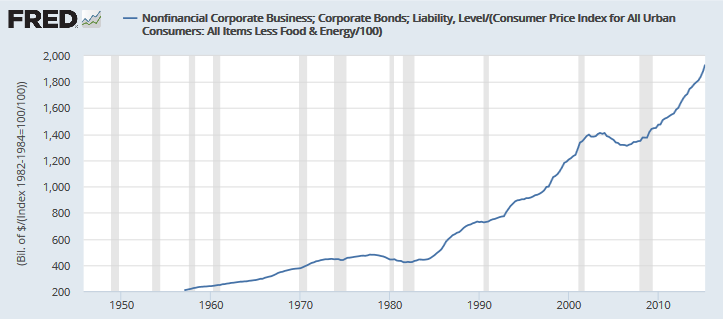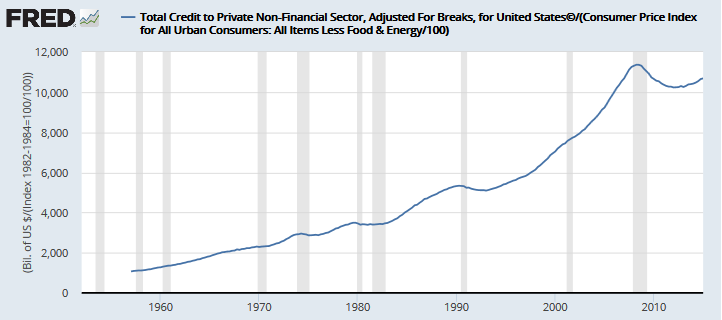Brad DeLong talks about how other economists view Fed interest rate policies as “price controls”. Then he makes a comparison to the present situation with on an example of a “price floor” in agricultural products. But are low interest rates a price floor or a price ceiling?
If you think that interest rates need to go lower to efficiently clear the market than the zero lower bound would be a price floor. In effect, you cannot lower the price of money. This is how Brad DeLong views the current interest rate policy.
If you think that interest rates need to go higher to clear the market than the zero lower bound would be a price ceiling. In effect, the price of money is being pushed low. This is not how Brad DeLong would see current interest rate policy. Yet this is how the others are seeing it.
Compare this Biz cycle to the last
What do we know about a price ceiling? In a price ceiling, suppliers are less willing to supply the good or service. Is that why bank lending is down so low this business cycle? (link to graph)

Or is bank lending down due to deleveraging?
Also in a price ceiling, there is demand to raise the price. There is demand for the good or service. So is there demand for money? Well, corporate bond liabilities are up high in this business cycle which would imply that there is a higher demand for money. (link to graph)

Yes, there is demand for money through selling bonds, but not through borrowing from the banks.
In this business cycle compared to the last, it would seem that banks might be reluctant to lend with the price of money so low. Banks would prefer a higher price to sell the money. So banks limit their supply of loanable funds. Yet corporations that want money have gone to selling bonds to investors who are reaching for some yield. So it seems that the marketing clearing price might be higher which upon a first approximation says that low interest rates are a price ceiling, not a price floor.














Leave A Comment